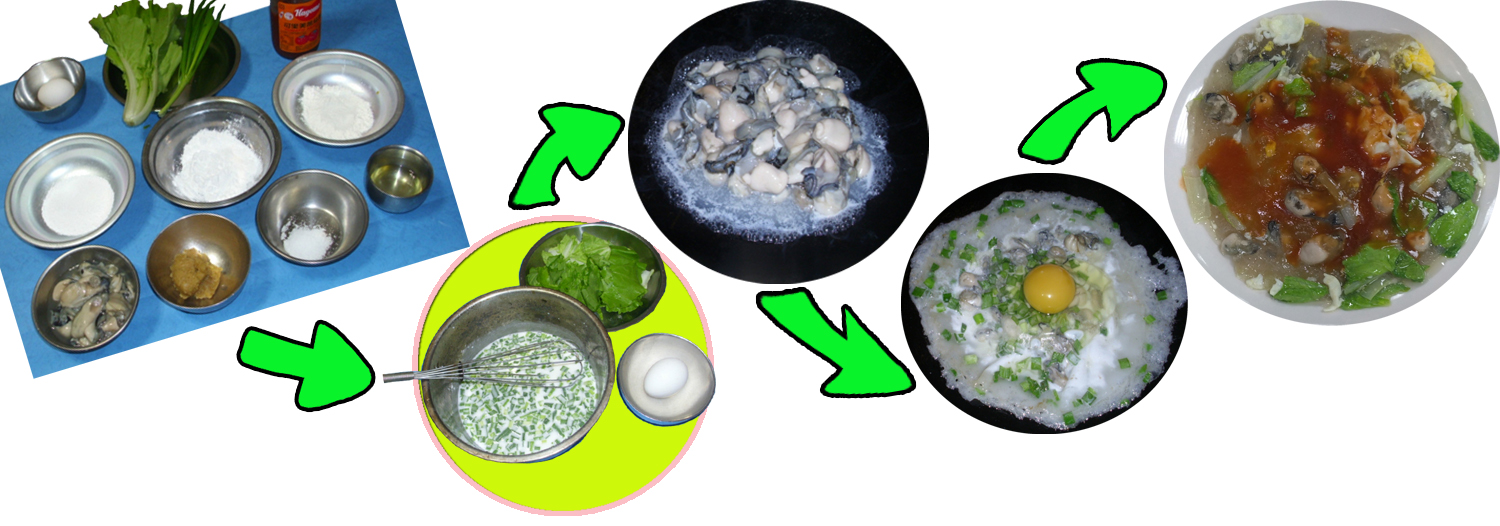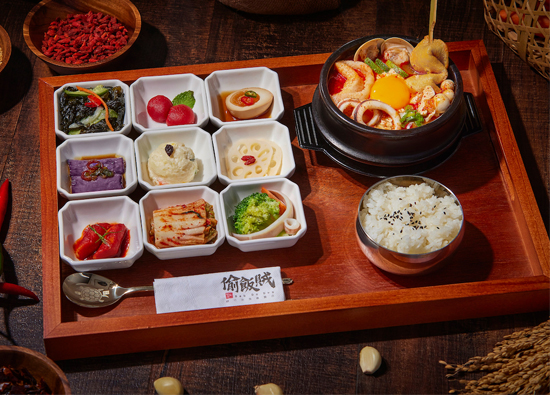09.2021 Life Guide
Cooking traditional snacks at home
Yu Chang technical commercial vocational high school / Lin Chaobao

 Affected by the covid-19 epidemic, many people began to try to cook three meals. In this issue, the "gourmet column" specially selects two Taiwanese specialties, so that everyone can easily complete them at home. Don't talk much. Come and DIY with us!
Affected by the covid-19 epidemic, many people began to try to cook three meals. In this issue, the "gourmet column" specially selects two Taiwanese specialties, so that everyone can easily complete them at home. Don't talk much. Come and DIY with us!Oyster omelet
According to a survey by foresight magazine, "Oyster fried" is considered by the people of Taiwan to be "the most representative of Taiwan cuisine". In the "No. 1 voting activity for foreigners in Taiwan cuisine" organized by the Department of Commerce of the Ministry of economic affairs, "Oyster fried" also won the snack Title. One of these distinctive and popular cuisines is from southern Fujian snacks. The other is that in 1661, when Zheng Chenggong's army landed in Tainan to fight with the Dutch army, due to lack of food, he decided to use local materials to mix sweet potato powder and other rice flour into a pulp, add various seafood, meat and green vegetables, and fry them into cakes in a frying pan, which is the prototype of "Oyster frying".
[materials and manufacturing methods]
Main materials: 150 grams of oyster and 1 egg.
By materials: 1 Chinese cabbage and 60g leek.
Slurry: 50g sweet potato powder, 20g Taibai powder and 120g water.
Seasoning: 50g edible oil, 200g water, 40g miso, 20g sugar, 40g ketchup, 40g sweet chili sauce, 3G firewood fish powder, 1g white pepper powder, 3G sesame oil and 20g Taibai powder.
Manufacturing method:
After shelling, wash the baby in water.
Wash cabbage and leek and set aside.
After cleaning the egg shell, knock it open and put it into a bowl.
Cut the cabbage into sections, dice the leek and put it on the side dish.
50 grams of sweet potato powder, 20 grams of Taibai powder and 120 grams of water are mixed and stirred into a powder.
Turn on a low heat, pour 50g of edible oil, fry the oyster until half cooked, add cabbage and egg liquid, move the pot slightly to make the slurry mature, but avoid burning.
Turn the oyster over and fry until it is cooked (golden) and serve.
Making dipping sauce: 200g water, 2T miso, 1t sugar, 2T tomato sauce, 3T sweet chili sauce (or 3T seamount sauce), 1t firewood fish powder, 50g pineapple juice, a little white pepper and sesame oil. After mixing and boiling, turn low heat, thicken with Taibai powder water, and finally sprinkle with oyster fry.
 Tricolor egg
Tricolor eggIt is a well-known cold dish appetizer with eggs, white and yellow salted duck eggs and black preserved eggs. The production method is the same as that of ordinary steamed eggs. The egg liquid is steamed and solidified, but it has more beautiful color matching, rich nutrition, soft, tender and salty taste, fresh flavor and suitable for young and old.
[materials and manufacturing methods]
Appliances: 1 set of steamer frame, 1 square bento box, 1 roll of fresh-keeping film and 1 fine filter screen.
Main ingredients: 4 eggs, 2 salted eggs and 3 preserved eggs.
Seasoning: 2G salt, 6G sugar, 3G firewood fish powder, 20g Taibai powder and 40g water.
Manufacturing method:
Wash the shells of eggs, salted eggs and preserved eggs.
Take a pot of cold water, add 10 grams of salt (Note 1), put in salted eggs and preserved eggs, and cook over low heat for 15 minutes to make the eggs fully cooked.
After the salted and preserved eggs are cooled, peel off the eggshell.
Knock the eggs open into a bowl, pour 40 grams of water and 10 grams of Taibai powder, and stir well.
The shelled salted egg and preserved egg are cut into dice or strips.
Take one square bento box, lay a layer of fresh-keeping film or apply a layer of salad oil (Note 2), put in diced or strip-shaped salted eggs and preserved eggs, arrange them evenly, then pour the egg liquid in step 4 into the square bento box until it is completely covered with salted eggs and preserved eggs, filter out the bubbles on the upper surface with a fine oil screen, and finally cover a layer of fresh-keeping film to avoid dripping steam water in the process.
Put the bento box into the steamer, turn on the medium heat, reserve a small hole in the steamer cover (Note 3), turn to the medium heat after the water boils, and cook for 30 minutes. Pay attention to the heat during the process. Do not steam too old or not cooked. If it is not cooked thoroughly, you need to return to the pot for steaming.
It is recommended to slice and plate the finished product after cooling, and the shape will be relatively complete.
Note 1: when salt is added to the water, the subsequent eggshell is easier to peel off.
Note 2: the finished product can be completely deducted only after a layer of fresh-keeping film or salad oil is applied in the container.
Note 3: if you open a fire or the steamer cover does not leave a small hole, it is easy to cause the temperature to be too high, produce bubbles, turn into sponge eggs, or turn light green because of over ripening.





















